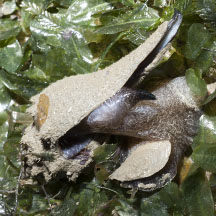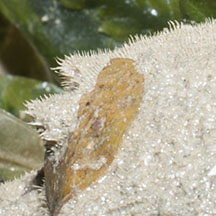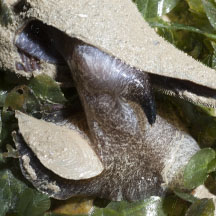 |
|
| shelled snails text index | photo index |
| Phylum Mollusca > Class Gastropoda > Family Melongenidae |
| Ternate false fusus Hemifusus ternatanus* Family Melongenidae updated Aug 2020 Where seen? This large snail is rarely seen alive, so far only on our Northern shores. Although the empty shell is sometimes seen, usually occupied by a hermit crab. Features: 7-12cm. Shell large, thick with a long siphonal canal. Operculum teardrop-shaped and made out of a horn-like material. Body pale with black speckles. 'Hairy' shell: The shell of a living snail is covered with a layer of fine hairs (called the periostracum). These hairs trap surrounding sediment so that the snail blends perfectly into the mud. When the snail dies, the hairs drop off revealing a glossy, orange shell. The large empty shell is often taken over by a hermit crab. Sometimes confused with the more commonly seen Spiral melongena, which has a shorter siphonal canal and a black body. The Ternate false fusus is much more slender and has paler body. |
 Upper side of living snail. Changi, Aug 14 |
 Fine hairs on the shell of a living snail shell. |
 The animal's body is pale with black speckles.. |
*Species are difficult to positively identify without close examination.
On this website, they are grouped by external features for convenience of display.
| Ternate false fusus on Singapore shores |
On wildsingapore
flickr
|
References
|